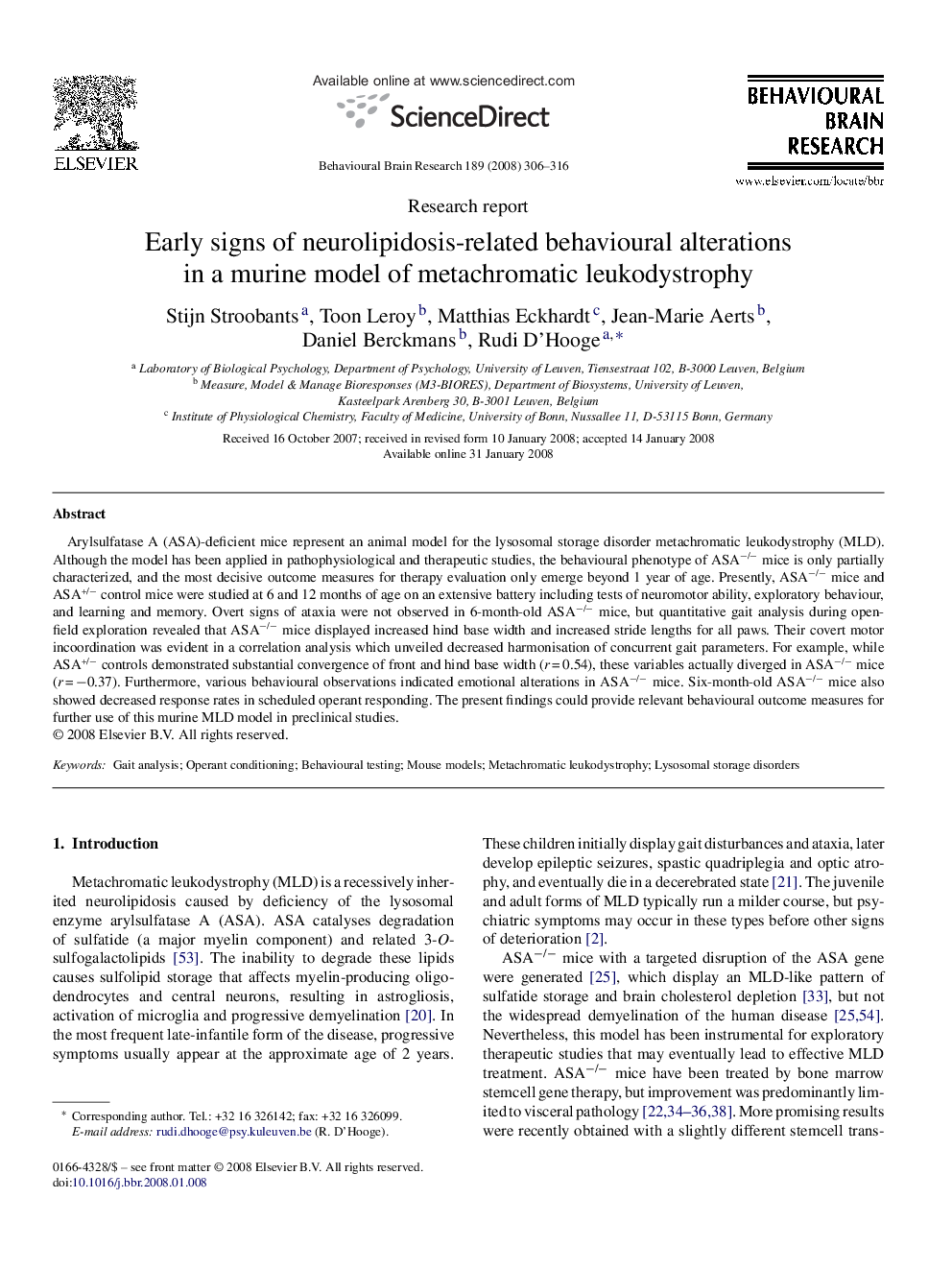| Article ID | Journal | Published Year | Pages | File Type |
|---|---|---|---|---|
| 4315257 | Behavioural Brain Research | 2008 | 11 Pages |
Arylsulfatase A (ASA)-deficient mice represent an animal model for the lysosomal storage disorder metachromatic leukodystrophy (MLD). Although the model has been applied in pathophysiological and therapeutic studies, the behavioural phenotype of ASA−/− mice is only partially characterized, and the most decisive outcome measures for therapy evaluation only emerge beyond 1 year of age. Presently, ASA−/− mice and ASA+/− control mice were studied at 6 and 12 months of age on an extensive battery including tests of neuromotor ability, exploratory behaviour, and learning and memory. Overt signs of ataxia were not observed in 6-month-old ASA−/− mice, but quantitative gait analysis during open-field exploration revealed that ASA−/− mice displayed increased hind base width and increased stride lengths for all paws. Their covert motor incoordination was evident in a correlation analysis which unveiled decreased harmonisation of concurrent gait parameters. For example, while ASA+/− controls demonstrated substantial convergence of front and hind base width (r = 0.54), these variables actually diverged in ASA−/− mice (r = −0.37). Furthermore, various behavioural observations indicated emotional alterations in ASA−/− mice. Six-month-old ASA−/− mice also showed decreased response rates in scheduled operant responding. The present findings could provide relevant behavioural outcome measures for further use of this murine MLD model in preclinical studies.
